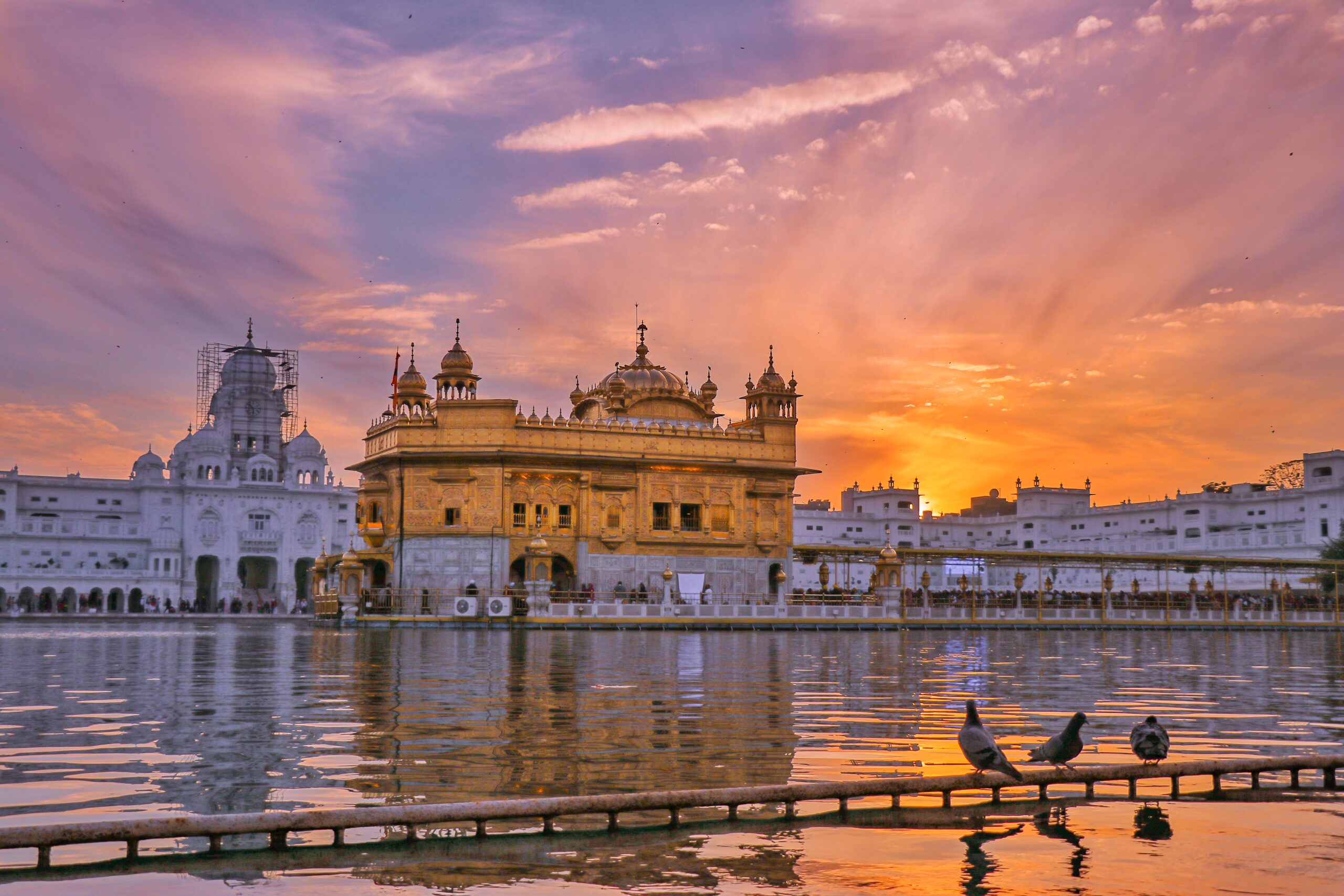The Indus Valley Civilization: A Brief Overview
The Indus Valley Civilization, also known as the Harappan Civilization, is one of the oldest and most advanced civilizations in the world. It flourished in the northwestern regions of the Indian subcontinent from around 2600 BCE to 1900 BCE. The civilization was named after the Indus River, which flows through the region. It is believed that the civilization had a population of over five million people, making it one of the most populous civilizations of its time.
Geography and Society
The Indus Valley Civilization was primarily located in what is now Pakistan and northwest India. The civilization was made up of several large cities, including Harappa, Mohenjo-daro, and Lothal. The cities were well-planned and had a sophisticated system of drainage and sanitation. The civilization was also known for its advanced techniques in metallurgy, pottery, and jewelry making.
Decline and Legacy
The Indus Valley Civilization began to decline around 1900 BCE, for reasons that are still not fully understood. Some theories suggest that environmental factors, such as climate change, may have played a role. Others suggest that political instability or invasion may have been the cause. Despite its decline, the Indus Valley Civilization left behind a rich legacy, including its impressive urban planning, advanced technology, and sophisticated writing system.
The Arrival of the Aryans in India
The Aryans were a group of nomadic people who migrated to India from Central Asia around 1500 BCE. They were a predominantly pastoral people who spoke an Indo-European language. The arrival of the Aryans was a significant event in Indian history, as it marked the beginning of a new era of cultural and linguistic diversity.
Impact on Indian Society
The Aryans brought with them a new culture that had a significant impact on Indian society. They introduced a caste system that divided society into four main groups: Brahmins (priests and scholars), Kshatriyas (warriors and rulers), Vaishyas (merchants and farmers), and Shudras (laborers). The caste system became an integral part of Indian society and had a lasting impact on social and political structures.
Religion and Literature
The Aryans also brought with them a new religion, which was based on the worship of nature gods and goddesses. This religion eventually evolved into Hinduism, which is still one of the major religions in India today. The Aryans also left behind a rich literary tradition, including the Vedas, a collection of religious texts that are still studied and revered by Hindus today.
The Rise of the Mauryan Empire and Its Greatest Ruler
The Mauryan Empire was one of the largest and most powerful empires in ancient India. It was founded by Chandragupta Maurya in 322 BCE and lasted until 185 BCE. The Mauryan Empire was known for its efficient administration, strong military, and significant cultural achievements.
Administration and Military
One of the key factors in the success of the Mauryan Empire was its efficient administration. The empire was divided into provinces, each of which was governed by a viceroy who reported to the emperor. The Mauryan Empire also had a strong military, which was organized into a system of ranks and divisions. The military was used to expand the empire’s territory and maintain its power.
Ashoka the Great
Ashoka the Great was one of the most significant rulers of the Mauryan Empire. He came to power in 268 BCE and ruled for 37 years. Ashoka was known for his military conquests, but he is perhaps best remembered for his conversion to Buddhism and his efforts to spread the religion throughout the empire. Ashoka also implemented policies to promote social welfare, such as the construction of hospitals and the establishment of a system of wells and rest houses for travelers.
The Gupta Empire: Its Significance in Indian History
The Gupta Empire was one of the most significant empires in ancient India. It was founded by Chandragupta I in 320 CE and lasted until 550 CE. The Gupta Empire was known for its significant cultural achievements, including advances in science, mathematics, and literature.
Cultural Achievements
The Gupta Empire was a time of significant cultural growth and achievement. The empire was known for its advances in science and mathematics, including the concept of zero and the decimal system. Literature also flourished during this period, with notable works such as the Kama Sutra and the Ramayana being written. The Gupta Empire was also a time of significant religious tolerance, with Buddhism, Hinduism, and Jainism all being practiced and respected.
Legacy
The Gupta Empire left behind a significant legacy in Indian history. Its cultural achievements helped to shape Indian society and culture, and its influence can still be seen today. The Gupta period is often referred to as the “Golden Age” of India, and it is a time that is remembered for its prosperity, peace, and cultural achievements.
The Mughal Empire: Notable Emperors and Their Legacy
The Mughal Empire was one of the most significant empires in Indian history. It was founded by Babur in 1526 and lasted until the mid-19th century. The Mughal Empire was known for its significant cultural achievements, including architecture, art, and literature.
Notable Emperors
- Akbar the Great: Akbar was one of the most significant rulers of the Mughal Empire. He came to power in 1556 and is remembered for his efforts to promote religious tolerance and cultural diversity.
- Jahangir: Jahangir was the son of Akbar and came to power in 1605. He is remembered for his patronage of the arts and his efforts to promote trade and commerce.
- Shah Jahan: Shah Jahan came to power in 1628 and is perhaps best known for his construction of the Taj Mahal, one of the most significant architectural achievements in Indian history.
- Aurangzeb: Aurangzeb was one of the last significant rulers of the Mughal Empire. He came to power in 1658 and is remembered for his strict policies and his efforts to promote Islam at the expense of other religions.
Legacy
The Mughal Empire left behind a significant legacy in Indian history. Its cultural achievements helped to shape Indian society and culture, and its influence can still be seen today. The architecture of the Mughal period, including the Taj Mahal and the Red Fort, is still revered and attracts millions of visitors each year.
The Impact of British Colonialism on India
The British colonization of India had a significant impact on the country and its people. The British arrived in India in the early 17th century and gradually established control over the country, eventually ruling it as a colony until 1947.
Economic Impact
The British colonization of India had a significant impact on the country’s economy. The British introduced new methods of agriculture and industry, which helped to increase productivity and output. However, the British also exploited India’s natural resources and wealth, which had a significant impact on the country’s economic development.
Social and Political Impact
The British colonization of India also had a significant impact on the country’s social and political structures. The British introduced new laws and regulations that had a lasting impact on Indian society, including the caste system and the legal system. The British also promoted Christianity at the expense of other religions, which had a significant impact on religious relations in India.
Indian Independence Movement
The British colonization of India eventually led to the Indian independence movement, which was a significant turning point in Indian history. The movement was led by prominent Indian leaders, including Mahatma Gandhi, who advocated for nonviolent resistance and civil disobedience. The movement eventually led to India’s independence in 1947.
Prominent Indian Leaders Who Fought for Independence
The Indian independence movement was led by several prominent Indian leaders who fought for the country’s independence from British rule. These leaders were instrumental in shaping Indian history and paving the way for Indian independence.
Mahatma Gandhi
Mahatma Gandhi was one of the most significant leaders of the Indian independence movement. He advocated for nonviolent resistance and civil disobedience, and his efforts played a significant role in India’s independence in 1947. Gandhi is remembered for his philosophy of ahimsa, or nonviolence, and his dedication to social justice and equality.
Jawaharlal Nehru
Jawaharlal Nehru was a prominent Indian leader who played a significant role in the Indian independence movement. He served as the first Prime Minister of independent India and is remembered for his efforts to promote economic and social development in the country. Nehru was also a proponent of secularism and democracy, and his vision helped to shape modern India.
Sardar Vallabhbhai Patel
Sardar Vallabhbhai Patel was a prominent Indian leader who played a significant role in the Indian independence movement. He is remembered for his efforts to unite the country and his role in the integration of the princely states into independent India. Patel was also a proponent of democracy and social justice, and his legacy continues to inspire Indians today.
India’s Independence and Its First Prime Minister
India gained independence from British rule in 1947, marking a significant turning point in Indian history. The country was led by its first Prime Minister, Jawaharlal Nehru, who played a significant role in shaping modern India.
Challenges of Independence
India faced several challenges in the aftermath of its independence. The country was divided into two separate states, India and Pakistan, which led to significant social and political turmoil. India also faced significant economic challenges, including poverty, illiteracy, and underdevelopment.
Nehru’s Vision for India
Jawaharlal Nehru had a vision for India that focused on economic and social development, secularism, and democracy. He implemented policies that helped to promote economic growth and development, including the establishment of public sector industries and the Green Revolution. Nehru also promoted social justice and equality, and his vision helped to shape modern India.
The Partition of India: Its Causes and Consequences
The partition of India in 1947 was a significant event in Indian history. The partition was a result of the Indian independence movement and the country’s struggle for independence from British rule.
Causes of Partition
The partition of India was caused by several factors, including religious and ethnic tensions, political instability, and British colonialism. The country was divided into two separate states, India and Pakistan, based on religious lines, with India being predominantly Hindu and Pakistan being predominantly Muslim.
Consequences of Partition
The partition of India had significant social, political, and economic consequences. The country was divided into two separate states, which led to significant social and political turmoil. Millions of people were displaced and forced to migrate to either India or Pakistan, resulting in significant social and economic disruption. The partition also had a lasting impact on religious relations in the region, and tensions between India and Pakistan continue to this day.
Key Figures in India’s Independence Movement
The Indian independence movement was led by several prominent Indian figures who fought for the country’s independence from British rule. These figures were instrumental in shaping Indian history and paving the way for Indian independence.
Mahatma Gandhi
Mahatma Gandhi was one of the most significant leaders of the Indian independence movement. He advocated for nonviolent resistance and civil disobedience, and his efforts played a significant role in India’s independence in 1947. Gandhi is remembered for his philosophy of ahimsa, or nonviolence, and his dedication to social justice and equality.
Jawaharlal Nehru
Jawaharlal Nehru was a prominent Indian leader who played a significant role in the Indian independence movement. He served as the first Prime Minister of independent India and is remembered for his efforts to promote economic and social development in the country. Nehru was also a proponent of secularism and democracy, and his vision helped to shape modern India.
Sardar Vallabhbhai Patel
Sardar Vallabhbhai Patel was a prominent Indian leader who played a significant role in the Indian independence movement. He is remembered for his efforts to unite the country and his role in the integration of the princely states into independent India. Patel was also a proponent of democracy and social justice, and his legacy continues to inspire Indians today.
The Role of Mahatma Gandhi in India’s Independence Movement
Mahatma Gandhi was one of the most significant leaders of the Indian independence movement. He played a central role in the country’s struggle for independence from British rule and is remembered for his philosophy of nonviolence and civil disobedience.
Philosophy of Ahimsa
Gandhi’s philosophy of ahimsa, or nonviolence, was a central component of his leadership in the Indian independence movement. He believed that nonviolence was the most effective way to achieve social and political change, and he used nonviolent resistance and civil disobedience to challenge British rule in India.
Leadership in the Independence Movement
India’s Constitution and Journey to Becoming a Republic
The Making of the Constitution
India’s Constitution was drafted by a Constituent Assembly, which was formed after India gained independence from British rule in 1947. The Assembly was chaired by Dr. B.R. Ambedkar, a prominent Dalit leader and jurist. The Constitution was adopted on November 26, 1949, and came into effect on January 26, 1950, marking India’s transition from a British colony to a Republic.
Key Features of the Constitution
India’s Constitution is the longest written Constitution in the world and has several key features. It provides for a federal system of government, with powers divided between the central government and the states. It also guarantees fundamental rights to all citizens, such as the right to freedom of speech and expression, the right to equality before the law, and the right to practice any religion. Additionally, the Constitution provides for an independent judiciary and a bicameral legislature.
The Journey to Becoming a Republic
India’s journey to becoming a Republic was a long and arduous one. After gaining independence in 1947, India was declared a Dominion within the British Commonwealth, with King George VI as its head of state. However, India’s leaders were keen on making India a Republic, with an elected President as the head of state. The Constitution provided for this, and on January 26, 1950, India became a Republic, with Dr. Rajendra Prasad as its first President.
Impact of Becoming a Republic
Becoming a Republic was a significant milestone in India’s history. It marked the end of British colonial rule and the beginning of a new era of self-rule. It also gave India a sense of national pride and identity, as it was now a sovereign nation with its own Constitution and elected leaders. The Republic Day celebrations on January 26th every year are a reminder of this historic event and the progress India has made since then.
Economic Reforms in India during the 1990s
Background and Need for Reforms
India’s economy in the 1980s was characterized by high inflation, low growth, and a large public sector. The government had a monopoly over several key industries, and there were strict controls on foreign investment and trade. In 1991, India faced a severe balance of payments crisis, which led to a series of economic reforms aimed at liberalizing the economy and attracting foreign investment.
Key Reforms
The economic reforms of the 1990s had several key components. They included liberalization of trade and investment, deregulation of industries, and privatization of state-owned enterprises. The government also reduced subsidies and lowered tariffs to encourage competition and efficiency. These reforms led to a surge in foreign investment and growth in several sectors of the economy, such as information technology, services, and manufacturing.
Impact of Reforms
The economic reforms of the 1990s had a significant impact on India’s economy and society. They led to higher growth rates, lower inflation, and increased foreign investment. The reforms also created new opportunities for entrepreneurship and innovation, as well as a more dynamic and competitive business environment. However, they also had some negative effects, such as widening income inequality and increased social tensions.
Challenges Ahead
Despite the successes of the economic reforms of the 1990s, India still faces several challenges. These include high levels of poverty and unemployment, inadequate infrastructure, and a large informal sector. The government will need to address these challenges through targeted policies and investments in order to sustain the gains made over the past few decades.
The Green Revolution and Its Impact on India’s Agriculture
What is the Green Revolution?
The Green Revolution refers to a series of agricultural innovations and practices that were introduced in India in the 1960s and 1970s. These innovations included the use of high-yielding crop varieties, improved irrigation systems, and the use of fertilizers and pesticides. The Green Revolution was aimed at increasing agricultural productivity and reducing food insecurity in India.
Impact of the Green Revolution
The Green Revolution had a significant impact on India’s agriculture and economy. It led to a dramatic increase in food production, particularly of wheat and rice. This helped to reduce food insecurity and improve nutrition for millions of people. The Green Revolution also created new opportunities for farmers and increased their incomes. However, it also had some negative effects, such as increased use of water and chemicals, which led to environmental degradation.
Challenges and Opportunities
Despite the successes of the Green Revolution, India’s agriculture sector still faces several challenges. These include climate change, soil degradation, and decreasing water availability. To address these challenges, there is a need for sustainable and climate-resilient agriculture practices, such as conservation agriculture and agroforestry. There are also opportunities for innovation and entrepreneurship in the agriculture sector, such as the use of precision agriculture and digital technologies.
India’s Nuclear Power Status and Its Implications for Foreign Relations
India’s Nuclear Program
India’s nuclear program began in the 1950s, with a focus on peaceful uses of nuclear energy. However, in 1974, India conducted its first nuclear test, which was a surprise to the international community. Since then, India has continued to develop its nuclear capabilities, with a focus on maintaining a credible nuclear deterrence.
Implications for Foreign Relations
India’s nuclear program has had significant implications for its foreign relations. India is not a signatory to the Nuclear Non-Proliferation Treaty (NPT), which has led to tensions with countries such as the United States. However, India has also pursued a policy of strategic restraint and has not engaged in nuclear arms races with its neighbors, such as Pakistan and China. India’s nuclear program has also given it a certain degree of strategic autonomy and bargaining power in international relations.
The Civil Nuclear Deal with the United States
In 2008, India signed a civil nuclear deal with the United States, which was aimed at expanding India’s access to nuclear technology and fuel. The deal was controversial, as it required India to separate its civilian and military nuclear facilities and place the former under International Atomic Energy Agency (IAEA) safeguards.
Impact of the Civil Nuclear Deal
The civil nuclear deal with the United States had several implications for India’s nuclear program and foreign relations. It allowed India to access nuclear technology and fuel from the international market, which was crucial for its energy security. It also helped to improve India’s relations with the United States and other countries, such as Japan and Australia. However, the deal was criticized by some as compromising India’s strategic autonomy and nuclear program.
The Way Forward
India’s nuclear program and civil nuclear deal with the United States have set the stage for a new era of nuclear cooperation and energy security. However, there are still challenges ahead, such as ensuring the safety and security of India’s nuclear facilities and preventing nuclear terrorism. India will need to continue to engage with the international community and pursue responsible nuclear policies in order to maintain its credibility as a responsible nuclear power.
In conclusion, India’s rich and diverse history spanning over 5,000 years has shaped its culture, traditions, and people. From the Indus Valley Civilization to British rule and independence, India has undergone numerous changes and struggles, yet has emerged as a vibrant and thriving nation. Understanding its history is crucial in appreciating the country’s unique identity and continuing to shape its future.
What is the historical origin of India?
The story of India starts with the Indus Valley Civilization and the arrival of the Aryans. These two periods are referred to as pre-Vedic and Vedic times. The Rig Veda is the oldest written source of information on India’s history.
What is the biggest history in India?
India has had several large empires throughout its history. The Mauryan Empire was the largest around 250 BCE, followed by the Mughal Empire at its peak in 1690 CE, and then the Gupta Empire at its height in 400 CE. For comparison, the current Republic of India is also listed.
When was India founded?
The Republic of India came into existence on January 26, 1950, after the adoption of an Indian constitution towards the end of 1949.
What was India before India became?
On this day in history, the United States officially recognized Indian independence in 1947. This occurred in accordance with the India Independence Act passed by the British Parliament on July 18th of the same year, which resulted in the formation of the Union of India and Pakistan from the former colony known as British India that was once part of the British Empire.
What was it called before India?
The Indian Subcontinent was under British rule and was known as British India before the partition of India and Pakistan. The British East India Company was the governing body of this protectorate.
Who colonized India?
The British raj refers to the time when Britain had direct control over the Indian subcontinent from 1858 until India and Pakistan gained independence in 1947.




